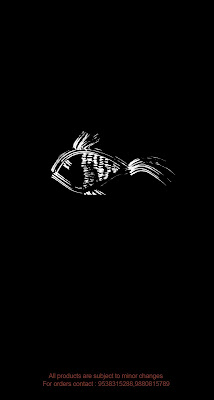A write up from the student participant Phagun Bhatla
from Srishti School Of Art and Design who visited Honnavar from buDa folklore .
DAY 1
We reached Honnavar around 6.30 in the morning. We went to the Folklore Study Centre where we were placed . We then discussed our focus points, as to who will focus mainly on which area of research. At around 10 am an old lady called Hanumi came. She was a crafts woman and was good at an art called "Shedi Kale". It is done with maximum 4 colours (white,red, yellow and black) all of which are obtained naturally. The brush is made by beetle nut with 3 or 4 teeth. It consists of 14 motifs each having its own meaning. This kind of art is done during festivals, weddings. Hanumi showed us some motifs and then she depicted her life through the art. In the evening we went to Marvinkurve Island and visited the Gowda Community(Hanumi's Community) there. They had a big house with 14 people living under the same roof. Their source of income was from selling the mats they make with grass. Around 100 mats are sold in a year at Rs. 60-Rs. 70 which is not enough for them. So the younger ones who are more interested in jobs work in other people's houses to earn a livelihood. They taught each one of us how to weave a mat. Initially weaving it was difficult and confusing, but gradually we became aware of the technique.
DAY 2

We reached Honnavar around 6.30 in the morning. We went to the Folklore Study Centre where we were placed . We then discussed our focus points, as to who will focus mainly on which area of research. At around 10 am an old lady called Hanumi came. She was a crafts woman and was good at an art called "Shedi Kale". It is done with maximum 4 colours (white,red, yellow and black) all of which are obtained naturally. The brush is made by beetle nut with 3 or 4 teeth. It consists of 14 motifs each having its own meaning. This kind of art is done during festivals, weddings. Hanumi showed us some motifs and then she depicted her life through the art. In the evening we went to Marvinkurve Island and visited the Gowda Community(Hanumi's Community) there. They had a big house with 14 people living under the same roof. Their source of income was from selling the mats they make with grass. Around 100 mats are sold in a year at Rs. 60-Rs. 70 which is not enough for them. So the younger ones who are more interested in jobs work in other people's houses to earn a livelihood. They taught each one of us how to weave a mat. Initially weaving it was difficult and confusing, but gradually we became aware of the technique.
DAY 2
Early in the morning we went to Salvador Mane(island) which was resident to the Fishermen Community. The Portuguese settled here who have now converted into Christians. Their main work is to make ropes. The ropes are made of coconut husks which are decayed in water for a minimum period of 9 months. After which the husk becomes soft and is easy to remove from the coconut. The husk is then beaten to make it smooth and is put on the machine to make the rope. If the coconuts are not decayed for 9 months the husk is green and hard and has a foul smell. By digging a stick, they have a record of where the coconuts are decayed. This process continues throughout the year. Later that day, in the afternoon we again went to the Marvinkurve Island to visit the people of Gowda Community. All the houses in that area have a particular structure with pavements and tulsi plants outside the houses, kitchens on the right(usually at the backside of the house) and attics.

In the evening 2 women from the Halakki Tribes called Sukri and Nubli came where we staying. They introduced us with their culture, rituals and the daily life routine. They have a unique style of wearing their sarees without their blouses. Heavy jewellery covers their neck. The jewellery is passed on from the mother to her daughter, and if she doesn't want it, it is donated in Tirupathi. Singing and dancing are their main hobbies. They have songs for every little thing or situation from their daily lives. A while later, we asked them to pick any of us and ask whatever they wanted to. Also some of us dressed as the Halakki women and danced with them. They also showed us how to make the thread from the cactus leaves. It was a very informative interaction.
DAY 3
We went to Duggur which is the residence of the Honnavar Halakki Tribes. It is a forest area with mud houses which have low roofs. We couldn't meet many people as all of them were out on the farms for work. We visited like 5-6 houses in that area most of which were made of mud. We visited a house where we saw Suggi dance. The males of that house used to play on the pots and sing for hours and hours. We also sang and danced with them. It was a wonderful experience.
DAY 4
This was the last day of our trip so we decided just to chill around. So we to a nearby beach. I was really excited as this was my first visit to a beach. It was not a commercial beach so it was only us on the beach. It was raining heavily and all of us were on happily playing on the beach. So on the last day we had fun and relaxed as we the bus to catch the same night.






































3 comments: